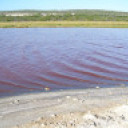Do Cyclones only form off the East Coast Aus during MJO phases?


Yeah, the MJO basically increases the likelihood of a TC forming (but when/where is another discussion).
However TCs can form at any time if the environmental conditions are suitable.


Just rereading your question - in particular the use of the term "off the East Coast Aus" - that's a very specific regional reference. My previous answer was related to general TC development across the waters of northern Australia, and also the Tropical South Pacific.


There's an article on the MJO here yocal: http://www.swellnet.com/news/swellnet-dispatch/2012/03/15/cyclone-prospects-warming
And during winter the MJO is further north of the equator and doesn't influence our weather. We fall as you say more under the influence of the LWT and its phases.


Guys, how much would you say that the inactive phase of the MJO is actually a thing of its own, as opposed to conditions "as usual", where ENSO and other factors dominate.


Sorry, I don't quite understand the question Mitch.


Do you see the MJO as having a +ve and -ve phase which can control the weather?


Or is the strong +ve phase kind of just an add on to whatever else is going on?


So if we can use the MJO forecast as a heads up for potential cyclone swells, is there anything we can use (other than wams) to predict a sustained band of 25+ kts trades between NZ & New Cal?
E.g. last year, the sunny coast was a consistent 3ft+ (admittedly junky, but with the right craft, there's sections for all to share) for about 5 days before chrissy, without any special kind of weather phenomena. Then that cyclone formed but didn't quite deliver. So in hindsight, I'd rather bank on consistent, predictable, stable tradewind swells than cyclones. So do we have any medium term (month-ish) indicators? Maybe even a weak MJO in phase 5-6, which may support squash zones as opposed to erratic cells?


To answer your questions.
Firstly, there's no negative/positive phase of the MJO, it's just weak, moderate or strong.
The phases mentioned when talking about the MJO relate to the area of the globe the MJO is currently in (we sit at about phase 5 on this diagram: http://www.bom.gov.au/climate/mjo/graphics/rmm.phase.Last40days.gif )
The greater in strength the MJO is, the greater the instability and convection in the atmosphere, and this leads to an increased chance of cyclone formation. But you need the sea surface temperatures to also be at least 26.5deg and also weak upper atmosphere winds.
The MJO has been weak-moderate in strength in the Indian Ocean for the past fortnight and this has led to a couple of tropical cyclones to form in the Bay of Bengal region, the strongest being Very Severe Tropical Cyclone Madi about a week ago.
Current forecasts are a little divergent on what the MJO will do, but most are showing that it will move into our region in the next two weeks and possibly weaken slightly.
The BOM's update on the outlook is due about 3pm this afternoon so we'll see what they are expecting.


A couple of the super long range models were hinting at the MJO moving into east coast longitudes in about 8-10 days time with the possibility of a weak cyclone forming up in the cape or north of cairns towards the end of their runs. However the reliable EC wasn't being so "upbeat" with the cyclone forecast. Still worthy of keeping an eye on as there's sweet FA else to look out for on the east coast at present. (other than the potential for the quick wizzing Tasman low which won't deliver sweet FA to SE Qld)


Here's the BOM's update, similar to your and my thoughts Don:
"It is becoming increasingly likely that parts of northern Australia will see another burst of monsoon activity before the end of the year. Enhanced cloudiness associated with the Madden-Julian Oscillation (MJO) is currently located over the eastern Indian Ocean and most climate models forecast the MJO to progress eastward into Australian longitudes over the coming week. The North Australian Monsoon often becomes more active when influenced by the MJO. Weather models support this outcome; a monsoon trough is forecast to develop over northern Australian waters next week. However, there is currently uncertainty as to whether the trough will move southwards over the Australian continent, or linger offshore to the north. In either case, next week is likely to see active tropical weather over southern Indonesia, East Timor and along Australia's North Coast. Showers or storms may push inland, over northern Australia, depending upon the movement and location of the trough. This also increases the risk of tropical cyclone development within the Australian Region over the next fortnight."


Yeah important to get the terminology right.
So is there any weather pheomena that is directly modelled to predict tradewinds? Or is there any indirect methods, like saying if the MJO's not in our phase, then squash zones are more likely in our phase (when the MJO is in our phase & strong: cyclones are more likely. So is it also safe to say that organised belts of trades are less likely? And if so, is it a fair to assume the reverse: when the MJO is weak & not in our phase, cyclones are less likely and organised belts of trades are more likely) ? Or ENSO models? Anything? I'm assuming that a well organised belt of tradewinds pointing at SEQ and a cyclone in our swell window is mutually exclusive... could tradewinds be a good cradle for a cyclone though?


Not really. Besides deterministic medium-range computer models, there's nothing beyond a week or two that's applicable for surf outlooks. However, I've been working on a few ideas revolving around climate surface wind stress forecast data but its still in its early stages.


Oh yeah, sounds good. Man I need to write these things by hand and sleep on them next time. So confusing, had to remind myself that it's just for the purpose of deciding, do I need to bring. my craft for Moffat's, King's or both over Chrissy haha. This is before I even factor in local winds :s


Nice tweak on the orange observed tag. Is yepoon up and running? Be good to see how much of a tradewind swell there is. Also, it'd be good to see a cooly and seaway observed winds graph, on the goldy report.


Yeah, Yeppoon is working, has 3ft of trade-swell there this morning, backing off during the day. Not sure how much would squeak through the various offshore islands and reefs.


Sick Android can now stream cams...does that mean the app is a little while off?
But I can't actually see the Yepoon report...


GROUNDSWELL ..... answer from Ireland thread that got hi jacked
Q : " groundswell commented Sunday, 5 Jan 2014 at 1:39am Southey what do you think is more important with a cyclone swell or one of those tight compact lows (besides intensity of winds) do you think its width of fetch pointing at location or length of fetch?
Im guessing width of fetch would increase the amount of areas picking up swell but would it improve period and size as much as the length of the fetch?
(Say like with two tight compact lows doing a figure 8, or bicycle chain sort of thing- not much width but lots of length vs wide intense fetch and not so long.
A: Thats a hard one . Obviously straight forward the length of fetch is most important . In circular wind patterns ( note , Being mainly southern- western Aust. oriented , others will have better insight ) , the fetch is theoretically endless . But distance from the source is important , obviously a small low or cyclone without a supporting / cradling feature or for that matter an adjacent fetch of similar directed winds to " pre build / agitate the surface " will be quite focused and narrow .
You see in the larger closed systems like the North Pac. and Atlantic that the broader the fetch and further from the shoreline then the width of fetch even if its not evenly distributed will help maintain regularity in the swell , and in the end all energy ( spacial ) in a system over longer distances will help with the Swells period as many slight variances in swell direction from differing squall lines in a system will merge to one swell train the further it travels ....
There are many differing quirks to differing regional systems , allthough on paper they may look similar . Things like captured fetches be from retrogrades to Fuji' effects have different outcomes . The former can give rise to the bike chain concept you spoke of , generally though a more symetrical system, will be better at capturing earlier energy and increasing it . Creating an artificially enhanced fetch or a virtual fetch ......The broader teh system then works on the same principle as it can move around or even BOMB and increase in size and this can often work similar to retrograde even though teh cnetre of rotation has stalled or even continued away from the direction of the swell train , again note I'm not that experienced with wind swells ....
But take everything i write with a grain of salt , as I'm not qualified to change an Oceanographers waste bin , let alone actually contribute theories more than anyone else here . Anything that i grasp is from pure observation / speculation , and technically has little place in physics or mathematical data crunching . in a way its good , because often I'm wrong which is fine 'cause sometimes someone who has already grasped that can then re affirm themselves from my elemental mistakes .
Overlapping swells , interpreting long term trends , and monitoring LWT trough patterns is more my go . Again its not very clinical .... Sorry to disappoint .


No disappointment Southey thanks for the detailed answer.
Its something we could all learn a bit more about too. Even pro weather men get it wrong a lot.
But it doesnt stop us learning about this stuff and taking a few punts hey.


Just wondering how dependent cyclogenesis is on MJO activity in a region, particularly the east coast. Ie is there a direct link or does the 'likelihood' of cyclogenesis increase?